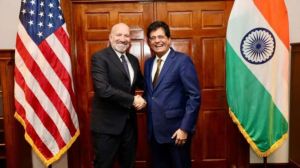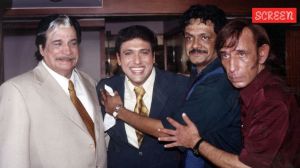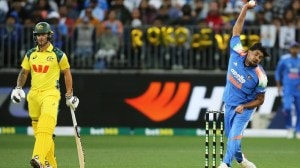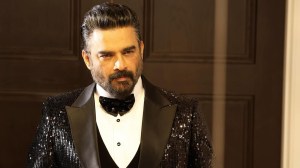Riding the anti-Bush wave
The start of a new Parliament session in Delhi once meant road blocks, dharnas, rallies, water cannons, lathi-charges and marches. But thing...

The start of a new Parliament session in Delhi once meant road blocks, dharnas, rallies, water cannons, lathi-charges and marches. But things have been pretty peaceful in the Capital over the last decade or so. Political parties have now practically abandoned the practice of holding rallies at the city’s Ram Lila maidan, perhaps daunted by the prospect of mustering the numbers required to fill up the sprawling grounds.
Politicians today blame the surfeit of entertainment channels for the petering out of popular political protests. Even a silver-tongued orator like Atal Bihari Vajpayee finds it hard to compete with the saas-bahu soaps. Back in 1977, Indira Gandhi had thought she had the perfect answer to ensure that the entertainment-starved masses stayed home when the united opposition organised a protest rally against the Emergency regime. V.C. Shukla ordered Doordarshan to telecast the hit film, Bobby at the same time.
Increasing prosperity meant that renting a crowd was no longer an easy option. Nor can the police in neighbouring states now browbeat transporters and shopkeepers into supplying them with crowds any more. People are more conscious of their rights today, and ubiquitous TV cameras leave nothing secret any more.
Perhaps the main reason for the failure of politicians to attract crowds is that they do not have saleable causes which arouse strong feelings. There are no commanding personalities like Indira Gandhi to inspire hate or reverence. No debates on subjects like reservations or Babri Masjid, which strike an emotional chord and bring out the worst in so many of us.
The anti-Bush campaign, however, has finally provided a common umbrella for many disparate elements to come together. Mullahs and maulvis rubbed shoulders with irreligious comrades in the protest marches. But the strange bedfellows were not always too comfortable with each other. The devout, conservative Muslims from the walled city and western Uttar Pradesh waving green flags took part in Wednesday’s rally organised by the Jamait-e-Ulema-i-Hind and preferred to keep away from Thursday’s sea of red flags, although the communists had hoped they would stay on in Delhi and swell their numbers. At the same time, the communists seemed a tad uncomfortable with the Samajwadi Party contingent, whose raucous and restless delegates obeyed only their local leaders, while the disciplined soldiers of the Left marched to a single tune.
Amar Singh and Mulayam Singh, pleased that they were not being treated as untouchables for a change, wore red Gandhi caps to emphasise their commonality with the Left. But as if to stress the difference, CPI(M) leaders like Sitaram Yechury and Brinda Karat sported smart red sunshades, with the initials “CPI(M)” emblazoned on them. Feeling left out, RJD MPs joined the chorus of anti-American chants in Parliament, even though their leader — Lalu Prasad Yadav — had by then left to attend the lunch hosted in honour of George Bush. Speaker Somnath Chatterjee was not to be seen at either the reception for the US president at Rashtrapati Bhavan, or at the lunch. He had excused himself on the plea of ill-health.
Meanwhile, the students from JNU — seasoned hands at anti-imperialist campaigns — helped to create a carnival atmosphere by burning US flags and effigies of Bush. Some sang Bob Dylan songs of anti-Vietnam vintage, indicating that it is time they updated their repertoire of protest songs. Even a college of yuppies like St Stephens sent a contingent of 50 students to join the rally. Celebrity writer and professional protester Arundhati Roy provided ethnic chic glamour to the circus.
The resonance of Bush as a popular hate figure comes from the fact that he symbolises different things to different people. For many of the Jamait crowd, he represented all that was anti-Islamic. Even while they vented their fury against the infamous Danish cartoons — which Bush could hardly be held responsible for — it was the American president who was still the target of their wrath. The students were mostly protesting against the US’s bloody record in Iraq. Some in the SFI contingent held posters which read, ‘Hands off Cuba’. Meanwhile the official Left railed against the just announced nuclear deal, even while Amar Singh’s men chose to chant, “Manmohan sharam hoi, Sonia sharam hoi.”
Clearly, one must thank George Bush for coming to India and giving so many politically bankrupt elements a cause to fight for and reinforce, in the process, the vibrancy of our democracy.





- 01
- 02
- 03
- 04
- 05


























